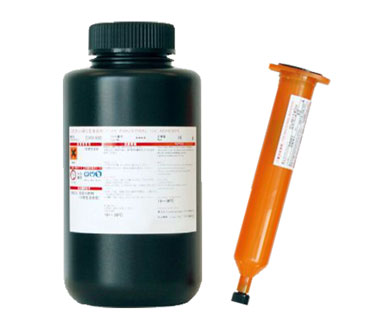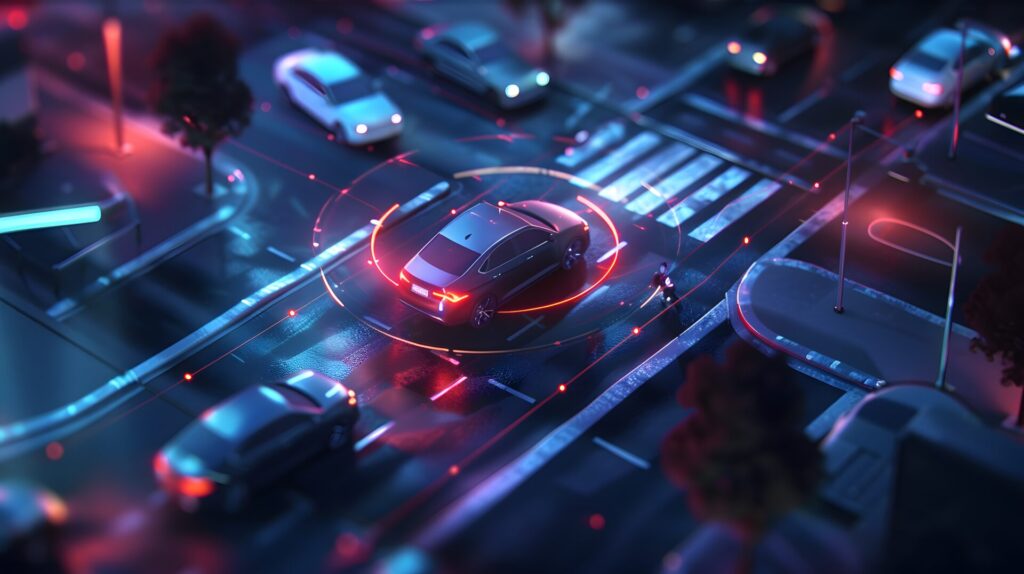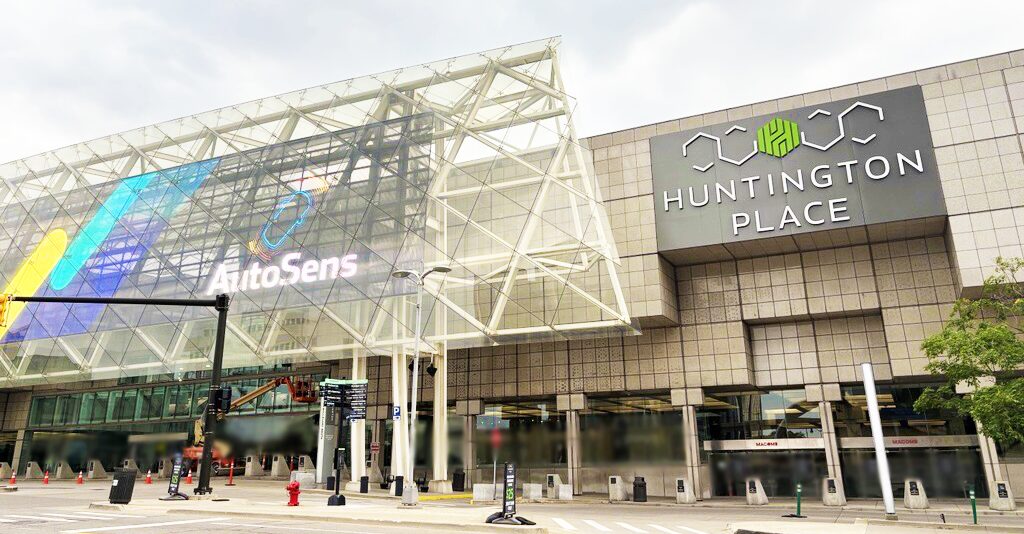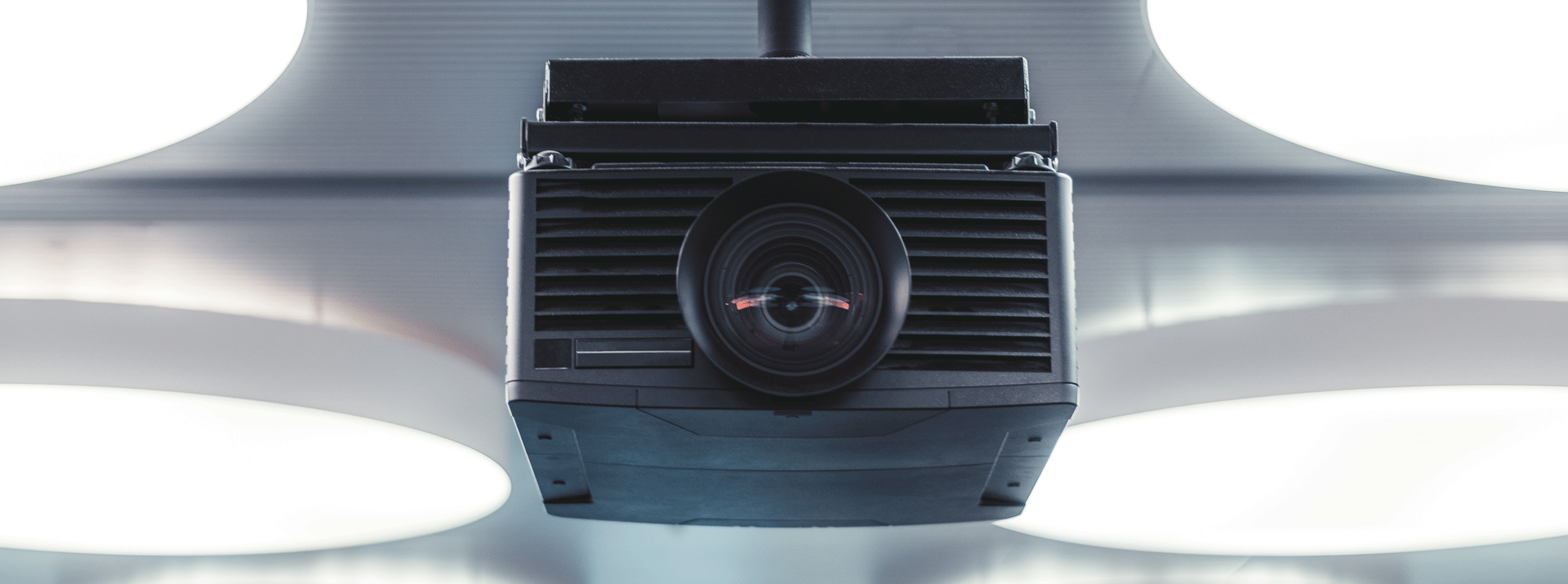
- Optical Products
Jettable SVR: A new optical elastic resin for various shaped displays
Contents
Screen shapes continue to evolve
Our daily lives are surrounded by digital devices with high-performance displays, such as smartphones, tablet PCs, and car navigation systems. The optical elastic resin (SVR) developed by Dexerials is a material that can be filled between the cover lens and the LCD or OLED display to bond the two together. It is increasingly being used to improve visibility and impact resistance.
As shown in the photo below, displays have evolved beyond the traditional rectangular shape in recent years. In-vehicle displays are now taking on more complex shapes to enhance their design, and three-dimensional displays known as 2.5D and 3D are beginning to appear on the market.
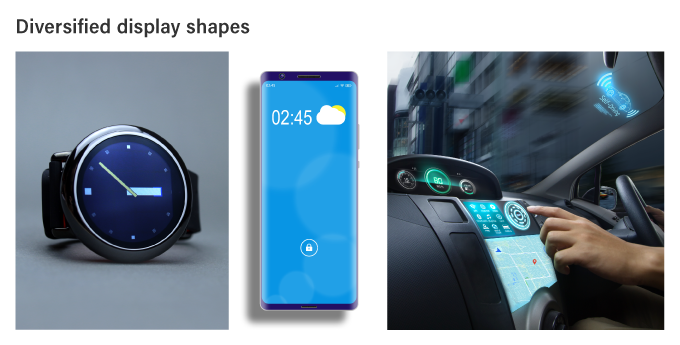
In addition, as smartphone LCD screens get larger, the surrounding bezel tends to get narrower every year, requiring more precise SVR coating.
Therefore, the trend of curved and oddly shaped displays is expected to continue. Dexerials has continued its efforts to develop new technologies to further improve the flexibility of the SVR coating shape.
“Jettable SVR”
In September 2020, Dexerials announced the development of Jettable SVR (jSVR). The jSVR is an SVR that can be used for bonding of cover lenses using the inkjet method. Similar to home inkjet printers that can print photos on greeting cards, the design data of the desired shape is created in advance on a computer. Therefore, the main advantage of jSVRs is the high accuracy of coating various shapes and patterns.

The figure above illustrates the application of SVR, hybrid SVR (HSVR), and jSVR.
The application method for the SVR is as follows: First, it is dispensed onto the cover lens. The cover lens is then inverted and laminated to the LCD to spread the liquid SVR over the entire surface, which is then cured by ultraviolet (UV) light. However, this method requires either creating a shape/pattern (i.e. fishbone pattern) or the application of a dam resin to prevent oozing from the panel edges.
The application method of HSVR utilizes a slit coating method, where the resin is applied evenly to a surface and is subsequently UV cured in two stages to maintain the resin shape. This prevents the SVR from overflowing. However, with this method, the coating shape is still limited to a rectangular shape.
In contrast, the jSVR application method utilizes the inkjet coating method to apply the required amount of liquid adhesive resin to the desired location, just like in printing. The resin is then temporarily cured with UV light and is fully cured after the parts are attached. This method allows the adhesive to be applied in various shapes and patterns, not just rectangular, and also eliminates any issues with the SVR overflowing.
Benefits of the jSVR
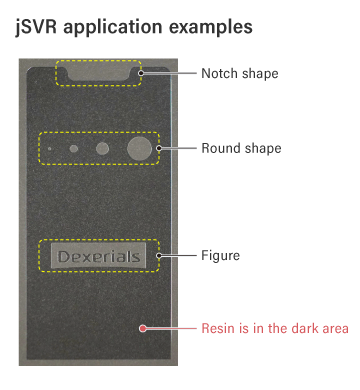
As shown in the photo above, jSVR can be applied in a variety of shapes, such as a notch shape (top), round shape (middle), and complex, detailed shapes such as the word “Dexerials” (bottom).
In addition, the thickness of the SVR can be adjusted according to the shape of the bonding material, making it possible to work with materials with uneven surfaces. Since the shape and thickness of the coating can be customized using software, it also leads to increased production efficiency by making it easy to change the production model. Another advantage is that the speed of inkjet coating is faster than conventional dispensing and slit coating methods, improving productivity.
The story behind the development of the jSVR
The biggest challenge of the development of the jSVR was adjusting the viscosity of the liquid adhesive. In order to apply the adhesive using the inkjet method, it was necessary to achieve a viscosity of several tens of mPa.s.
SVRs and HSVRs are designed with a viscosity ~5300 mPa.s because the viscosity must be high enough to create an embankment that acts as a “dam” without overflowing when applied. This viscosity is roughly equivalent to that of strawberry jam. In contrast, the viscosity of the jSVR is only 20 to 30 mPa.s, which is about the same as that of cream.
Despite the completely different physical properties, Dexerials formulated a variety of chemical compositions in order to achieve strength, elasticity, and optical properties that are comparable to those of conventional SVRs and HSVRs when cured. Dexerials hopes that the jSVR will lead to new design trends as digital display design engineers around the world develop cutting-edge displays.
- SHARE
 Back to top
Back to top  Contact us
Contact us 


